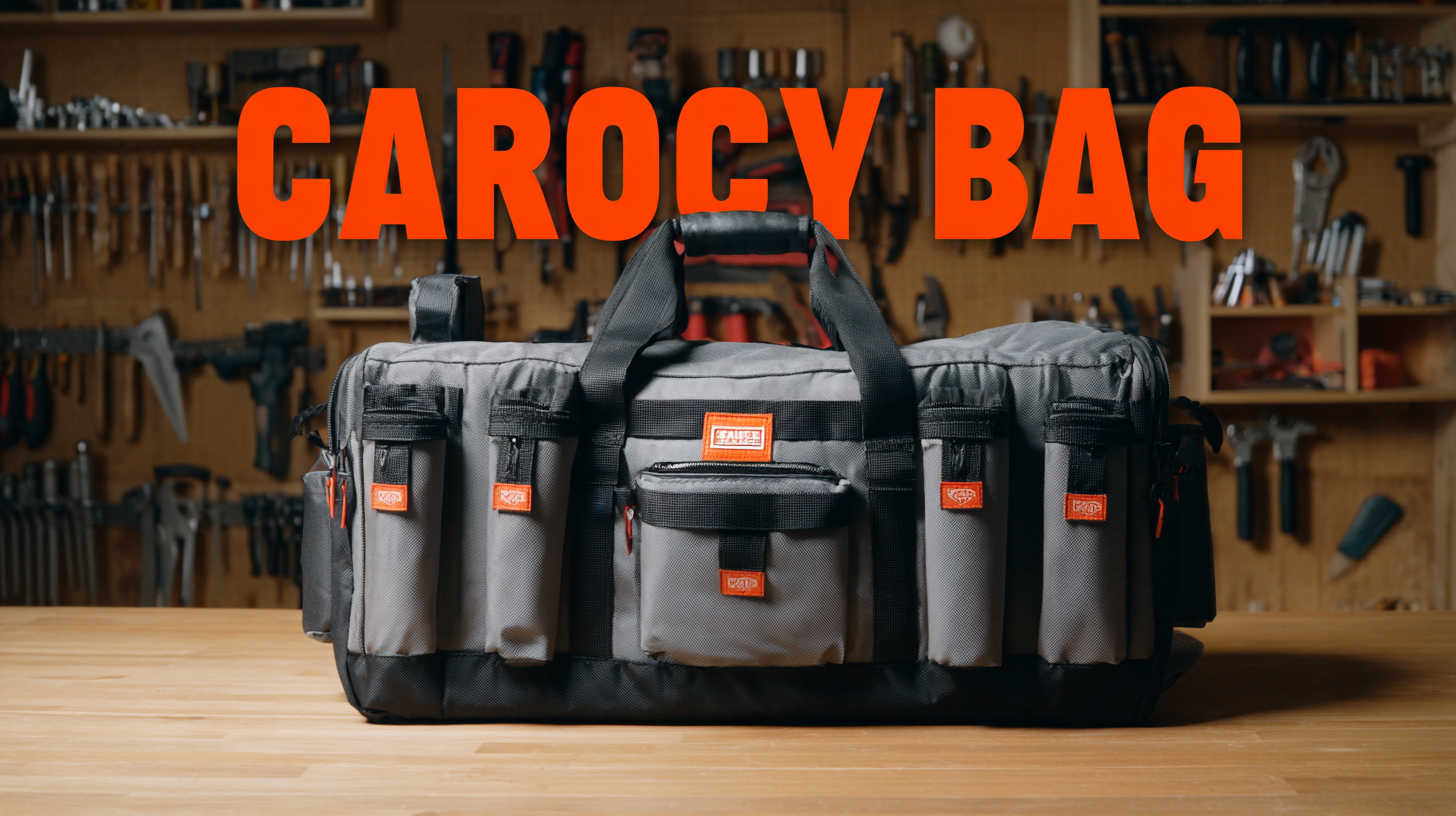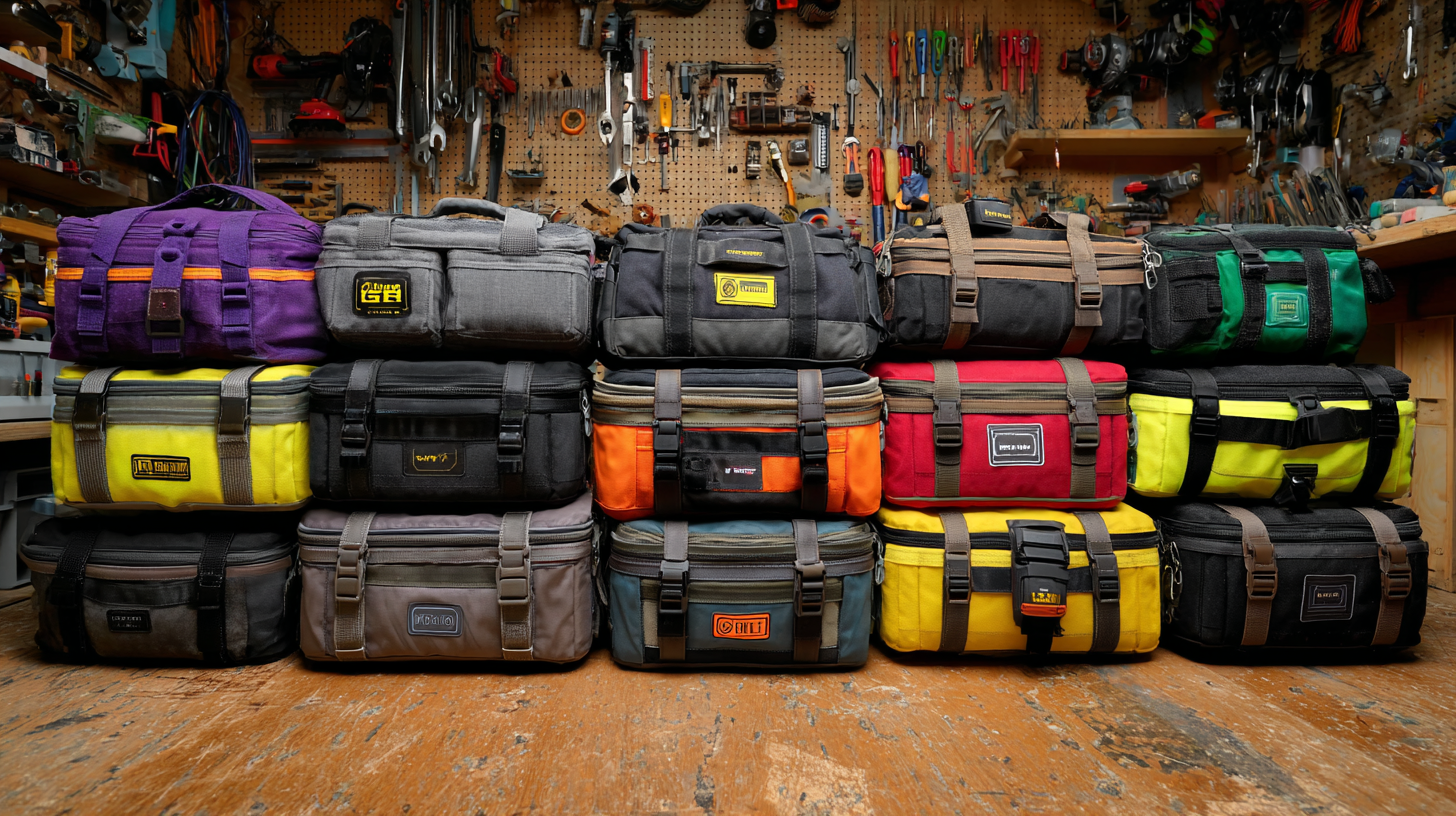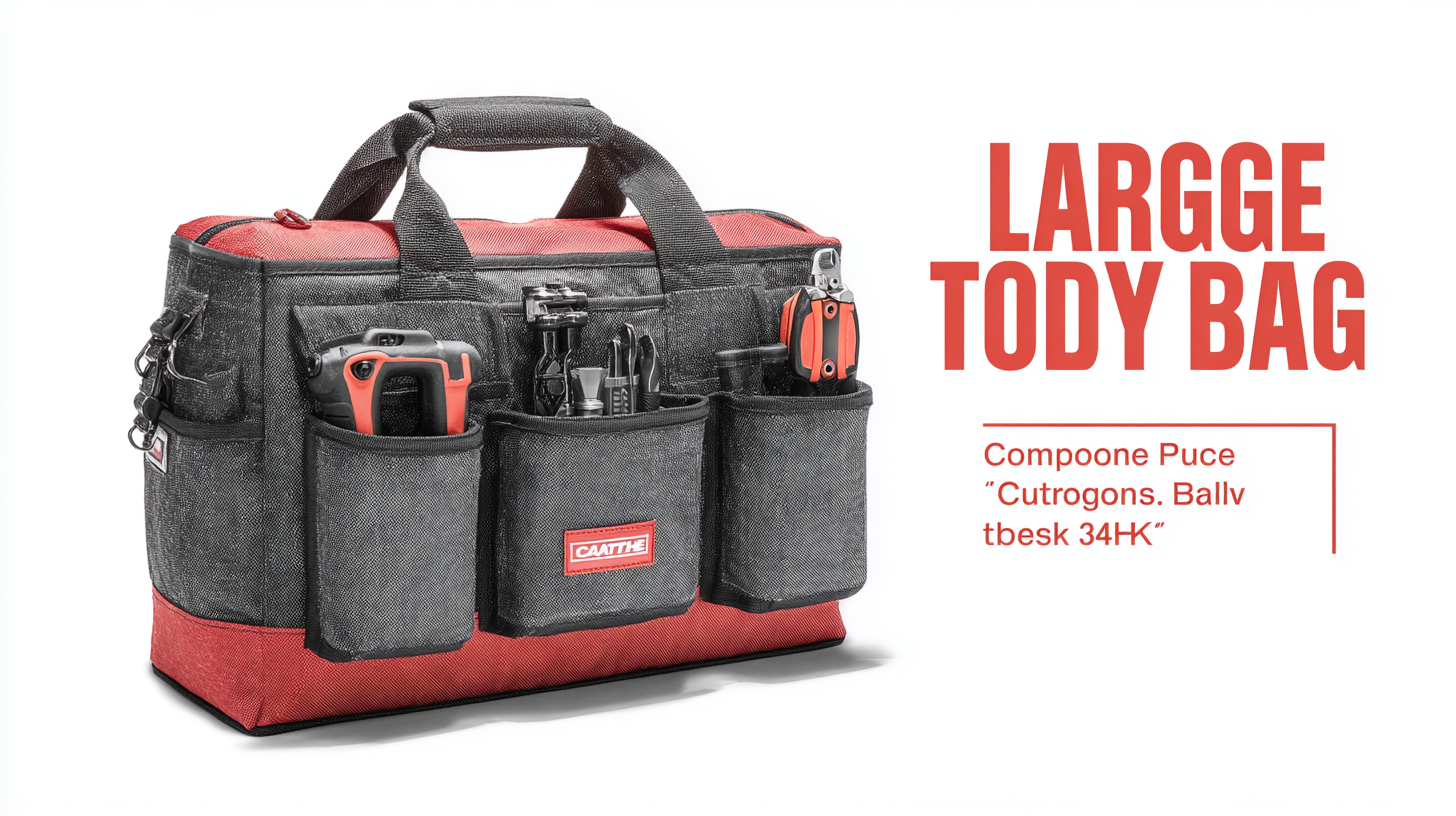- 0086-0769-87986375
- Welcome you to Dongguan Yili Bags Co., Ltd. website!
Common Issues Faced with Large Capacity Tool Bags: How to Choose the Right One
In today's fast-paced and demanding work environments, the need for effective tool organization is paramount, particularly for professionals who rely on Large Capacity Tool Bags. According to a recent industry report by IBISWorld, the global tool bag market is expected to grow at a CAGR of 4.2% from 2021 to 2026, highlighting an increasing reliance on high-quality storage solutions. However, with a plethora of options available, choosing the right Large Capacity Tool Bag can be challenging, as users often face issues related to durability, comfort, and size. A study conducted by the National Institute of Standards and Technology (NIST) indicates that approximately 30% of tool-related accidents are linked to inefficient storage, reinforcing the importance of selecting a bag that meets both personal and professional needs. This blog will explore common challenges associated with Large Capacity Tool Bags and provide insights on how to choose the most suitable option to enhance safety, organization, and productivity in various trades.

Challenges of Using Large Capacity Tool Bags and How to Overcome Them
When it comes to managing tools and equipment, large capacity tool bags are a popular choice, but they come with their own set of challenges. One major issue is organization; with ample space, tools often end up jumbled together, making it time-consuming to find what you need. To overcome this, look for bags with multiple pockets and compartments. Choosing a bag designed with specific sections for different tools allows for better organization and quicker access, saving you valuable time on the job.

Another common challenge is the bulkiness and weight of a fully loaded tool bag. Carrying heavy equipment over long distances can lead to fatigue and discomfort. To address this issue, consider bags with ergonomic designs that distribute weight evenly or those equipped with wheels. Additionally, investing in a bag made from lightweight yet durable materials can make a significant difference in portability without sacrificing strength. By considering these factors, you can enjoy the benefits of a large capacity tool bag while minimizing the associated challenges.
Key Features to Consider When Choosing a Quality Tool Bag Manufacturer
When selecting a quality tool bag manufacturer, it's crucial to consider several key features that influence durability, functionality, and overall value. According to the Freedonia Group, the global market for tool storage products is expected to exceed $5 billion by 2026, highlighting a growing demand for well-designed tool bags that can withstand rigorous use. Therefore, manufacturers who prioritize high-quality materials, such as heavy-duty canvas or reinforced stitching, ensure a longer lifespan, reducing the frequency of replacements which can be costly over time.
In addition to material quality, ergonomic design is essential. A study by the American Society of Safety Professionals indicates that improper carrying techniques can lead to musculoskeletal disorders, which are prevalent in professions that require manual labor. Tool bags with padded shoulder straps and multiple compartments enhance organization and ease of access, allowing users to work more efficiently and safely. As the industry evolves, choosing a manufacturer that integrates user feedback into their design process can lead to better functionality tailored to real-world applications.
Common Issues Faced with Large Capacity Tool Bags: How to Choose the Right One - Key Features to Consider When Choosing a Quality Tool Bag Manufacturer
| Feature | Importance Level | Common Issues | Suggested Solutions |
|---|---|---|---|
| Durability | High | Material wear and tear | Choose bags made from high-denier nylon or reinforced fabric |
| Weight Distribution | Medium | Back strain from uneven weight | Look for bags with padded straps and ergonomic designs |
| Storage Organization | High | Difficulty in finding tools | Select bags with multiple pockets and tool holders |
| Weather Resistance | Medium | Tools getting damaged in rain | Opt for water-resistant materials and rain covers |
| Portability | High | Cumbersome carrying options | Pick bags with multiple carry options (straps, handles, wheels) |
Tips for Assessing Durability and Functionality in Tool Bags
When selecting a large capacity tool bag, assessing durability and functionality is crucial. According to a report by the Freedonia Group, the demand for durable tool bags is projected to grow by 4.6% annually through 2025, indicating a strong market trend towards quality and longevity. A tool bag must withstand heavy use, especially in demanding environments. Look for fabrics made from high-denier nylon or polyester, which provide tear resistance and weatherproofing. Additionally, reinforced stitching at stress points and heavy-duty zippers enhance the bag's lifespan, ensuring it survives rigorous daily handling.
Functionality goes hand in hand with durability in the world of tool bags. A survey by Tool Box Buzz revealed that 65% of professionals prioritize organizational features such as padded dividers and multiple pockets. This level of organization not only prevents tools from clashing and becoming damaged but also enhances efficiency by allowing users to find their tools quickly. Moreover, weight distribution is essential; bags with adjustable or padded shoulder straps can significantly ease the burden on the user. In evaluating your options, consider how these durability and functionality features align with your specific needs and work environment.

Importance of Ergonomics in Large Tool Bags for Comfort and Efficiency
When choosing large capacity tool bags, the importance of ergonomics cannot be overstated. A well-designed tool bag not only offers ample storage but significantly enhances user comfort during extended use. According to a 2022 ergonomic assessment report by the American Society of Safety Professionals, tool bags that promote proper weight distribution reduce fatigue by up to 30%. This reduction not only aids in overall productivity but also minimizes the risk of musculoskeletal injuries, which are a common concern among tradespeople.
Furthermore, ergonomic tool bags often feature padded handles and adjustable straps that can substantially improve user experience. A survey of construction workers revealed that 65% preferred bags with ergonomic designs because they provided better support during heavy workloads. Additionally, the inclusion of strategically placed pockets allows for easy access to tools, further enhancing efficiency on the job site. With an estimated 40% of workers experiencing discomfort due to improperly designed bags, investing in ergonomically sound options is not just a matter of comfort—it is essential for maintaining productivity and health in the workplace.
How to Select the Best Tool Bag Size Based on Your Needs and Projects
When it comes to selecting the right tool bag size, understanding your specific needs and the types of projects you tackle is crucial. Larger tool bags can be beneficial for professionals who require a variety of tools on hand, especially for on-site jobs. However, an oversized bag can lead to clutter and make it difficult to find what you need. Analyze the tools you use regularly and consider a bag that provides ample space without being overwhelming.
**Tips:** To determine the best size, create a list of all the tools you use for your typical projects. Consider categorizing them into groups, such as hand tools, power tools, and accessories. This way, you can select a bag that accommodates all these categories comfortably without leaving any tools behind.
Additionally, consider the frequency and scope of your projects. If you're often engaged in small, quick jobs, a medium-sized tool bag might suffice. However, for larger projects or when multiple tools must be transported, opting for a larger bag with compartments can enhance organization and efficiency.
**Tips:** Look for tool bags with adjustable compartments or customizable inserts. This feature allows you to adapt the bag to your changing tool collection and different project requirements, ensuring you always have the right size for the job at hand.
